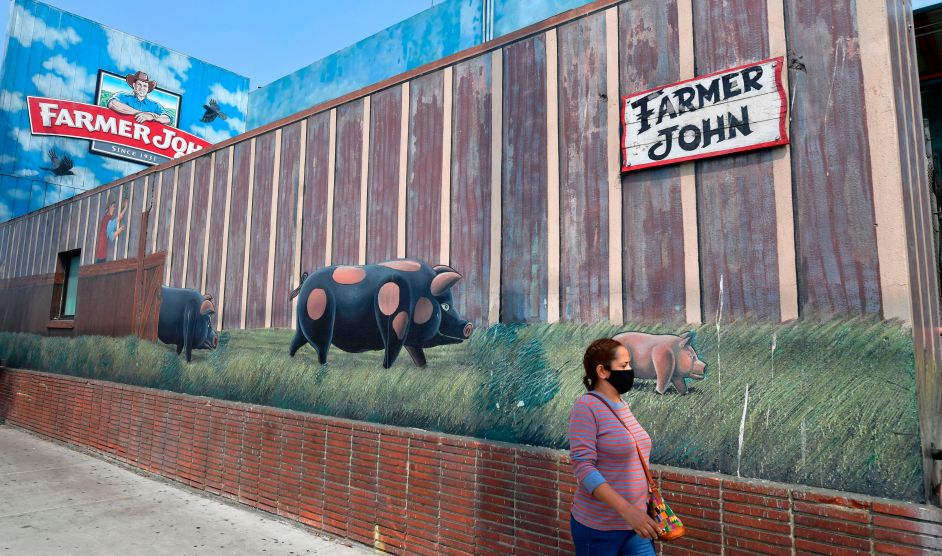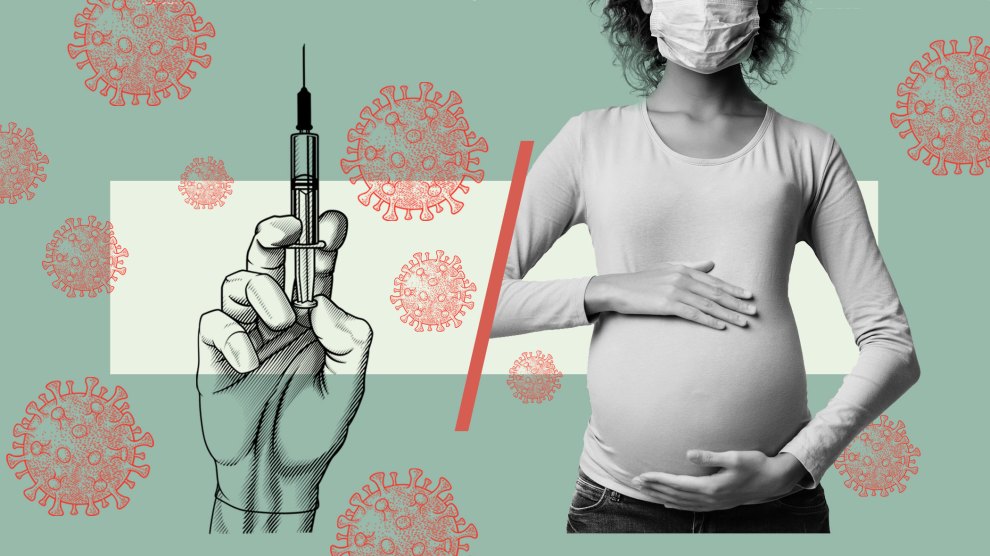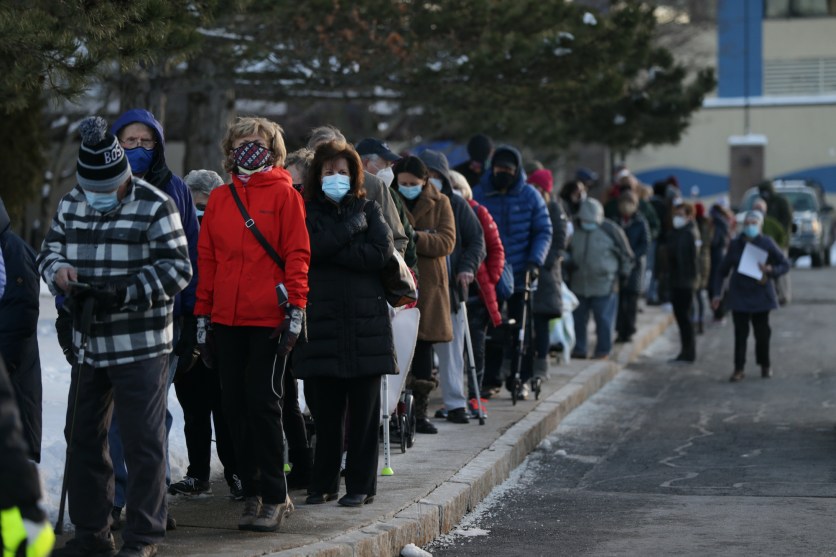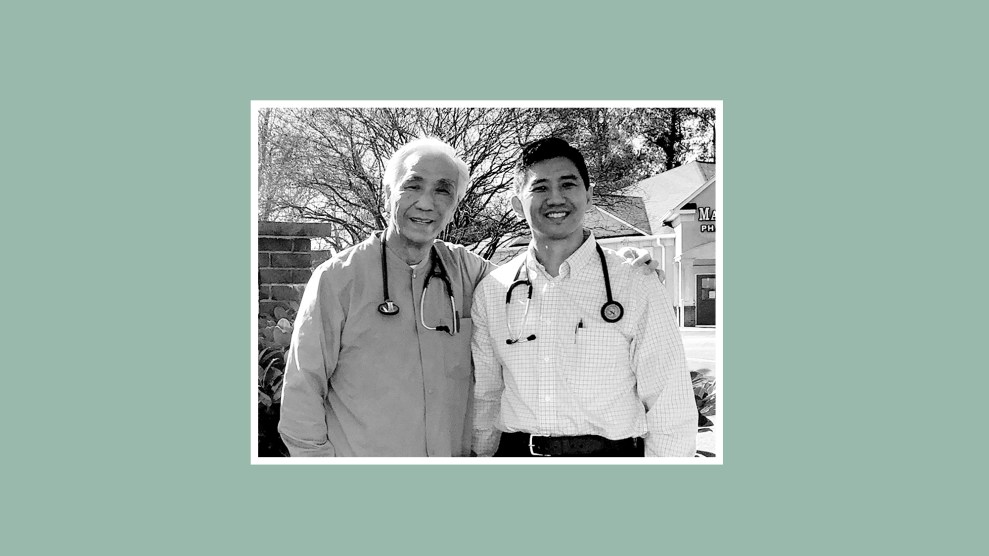On a cloudless February day, in the shade of a white tent set up in a small parking lot in San Francisco’s Mission District, Dina Gonzalez rolls up her left sleeve to receive her first dose of the Pfizer vaccine. She had recently recovered from COVID; after weeks of fever and sleeping in the basement and praying not to spread the virus to her husband or her kids, which, thank God, she didn’t, this shot could not come soon enough. “I don’t want to go through that again, no, no, no,” she says in Spanish. The 57-year-old runs a home day care, and she needs to protect herself and the kids as she reopens the business.
On the street outside the tent, vendors sell chicharrones and fruit cups, as a line of people signing up for a vaccination waitlist stretches to the end of the block. Alejandro Valencia, a 58-year-old cook who lives nearby, hopes a vaccine will help him get rehired at the Palace Hotel when it finally reopens. Maira Soto, 42, was told by the owners of the pharmacy where she works to sign up, but the rumors about the vaccine she’s read online make her nervous. Jon Jacobo, who helps run the site, overhears Soto fretting as he walks by. “I felt nervous the first time, too,” Jacobo tells her. “You’re gonna feel fine.”
This vaccination site is run by Unidos en Salud (United in Health), a collaboration between UC San Francisco and the Latino Task Force, a network of deeply rooted community organizations that banded together at the start of the pandemic. Over the past year, residents of the Mission have become accustomed to the flyers plastering the neighborhood’s doors and restaurant windows, encouraging them to get tested, and now, vaccinated, at sites set up by Unidos en Salud. The operations feel different from the sites run by the city. Clients can drop in, and they don’t need to show ID. Most are low-income Latino residents of the Mission and other neighborhoods in the city’s southeast quadrant, which has been particularly hard hit by the coronavirus.
Over the course of the pandemic, San Francisco has stood out for its ability to keep COVID at bay. As of March 15, about 450 people had died from the virus in a city of almost 900,000, the lowest rate of any major US city. Los Angeles’ and Manhattan’s death rates were more than four times higher. This success was due in part to aggressive actions by the local and state governments, and a populace that embraced mask-wearing and took social distancing seriously.
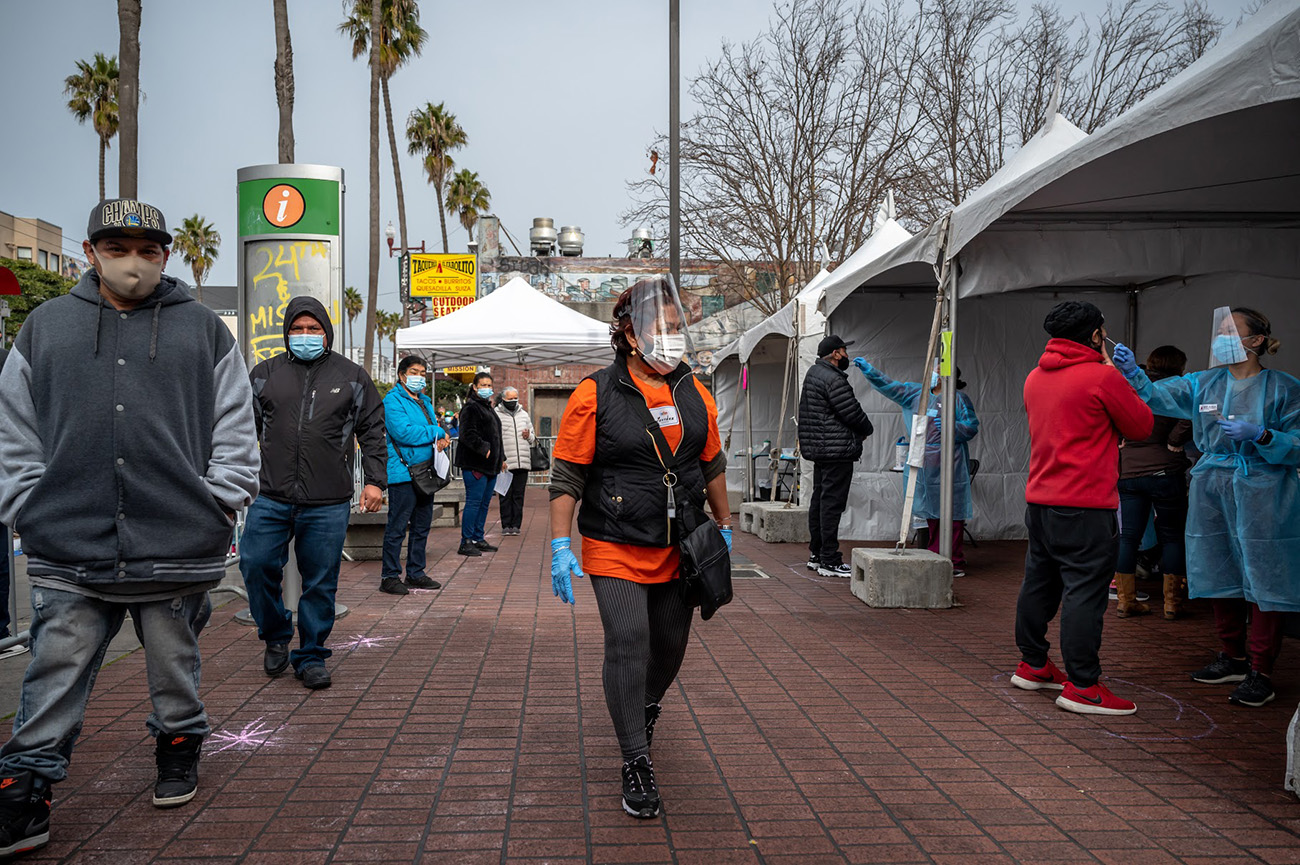
Unidos en Salud volunteer coordinator Lourdes Gomez-Rojas guides Mission residents waiting to be tested.
Yet another big reason was Unidos en Salud’s grassroots approach. Public health experts nationwide are now eyeing how it managed to both produce cutting-edge research and offer crucial services to neighborhoods in need. “We hear a lot about the importance of community engagement in the co-design of interventions and programs, but it’s very few programs across the country that actually do that in the way that it’s meant to be done,” says Dr. Elsie Taveras, executive director of the Kraft Center for Community Health at Massachusetts General Hospital.
From the start, Unidos en Salud shared responsibility in the design and implementation of its studies with community members and emphasized transparency. “To be respectful to the community organizations that allowed research to happen within their constituents, and coming back and respectfully reporting back on what you found,” Taveras says, “I cannot tell you how often we fail to do that.”
Dr. Diane Havlir, the chief of UCSF’s HIV, Infectious Diseases, and Global Medicine division, who’s led much of Unidos en Salud’s research, is the first to note that this partnership didn’t reinvent the wheel. Rather, it’s a case study in what happens when you get community engagement right—and how powerful it can be in shielding not just a targeted population but an entire city from a deadly virus.
In March 2020, UCSF doctors noticed a disturbing trend: Virtually every patient in San Francisco’s public hospital who was sick with the coronavirus was Latino. The finding was unsurprising to those familiar with the contours of San Francisco’s racial and economic disparities. The health care aides, delivery people, janitors, cooks, and other essential workers who were key to enabling the rest of the city to shut down couldn’t afford to shelter in place—and many were Latino residents of the Mission. To the members of UCSF’s infectious disease team who had trained during the height of the AIDS crisis, the parallels were immediately clear. “Throughout the history of every epidemic in the world, epidemics come in and hit everybody, and then very quickly, people who are privileged figure out how to protect themselves,” says Diane Jones, a retired UCSF nurse who now helps coordinate Unidos en Salud. “It took decades before we had to confront the disproportionate impact of HIV on poor people. With COVID, it came up immediately.”
“We knew hospitalizations are the tip of the iceberg of COVID,” says Havlir. She had learned from years of experience responding to the AIDS crisis in San Francisco and East Africa that a surveillance study was necessary to grasp the scope of the problem. Perhaps, she thought, her team could test the residents in the 16-block census tract that makes up the heart of the Mission.

A Unidos en Salud volunteer puts up fliers for free COVID-19 testing in the Mission District, where one in three residents speak Spanish at home.
The idea was daunting. She had no funding. San Franciscans were told to stay home, yet a study would require telling thousands of Mission residents to come out and stand in line to get tested. “UC couldn’t do it by just hiring a bunch of research assistants and combing the neighborhood,” Jones says. “They absolutely had to partner with a trusted community partner.”
Jones, a longtime Mission resident, suggested Havlir reach out to the Latino Task Force (LTF), a coalition of Mission-based nonprofits and activists that had been distributing food and other essentials to families in need since the beginning of the city’s shelter-in-place order in March 2020. Its organizers included the producer of Carnaval San Francisco, a cultural organization that puts on an annual Latino heritage festival; longtime educators and anti-violence activists; and the vice president of the school board. “I know people often say, ‘We’re so grassroots’—that’s a buzzword, right?” says Jacobo, LTF’s 32-year-old health committee chair. “But this is legit. Think of it like 15 people that grew up in this neighborhood, that have been fighting the issues of gentrification, police violence, income inequities, racial inequities—since, honestly, before my parents got here.”
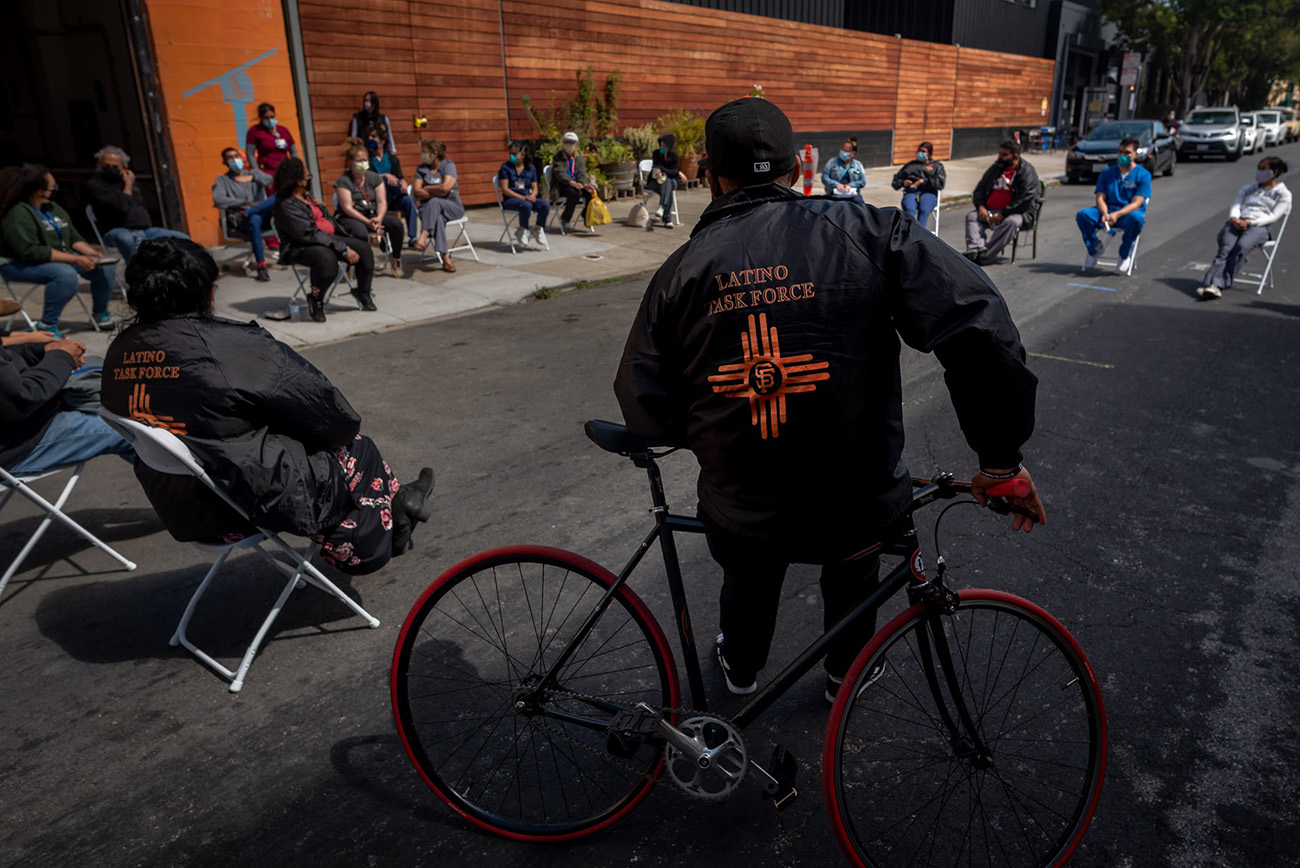
Latino Task Force members meet after drop-in testing outside the Mission food and resource hub known as Latino City Hall.
Over a series of conversations in April 2020 that Jacobo likened to speed dating, the researchers and organizers established their common concerns about the health of Mission residents, their interest in taking a holistic approach to public health, and their desire not to wait for government funding or permission. “We ain’t got time for that,” says Valerie Tulier-Laiwa, an LTF leader. “We’ve got time for nothing else but moving and shaking.”
But some LTF members were wary of outside researchers swooping in from an elite academic institution that sits on a hill overlooking the city. “We always get used as the guinea pigs to get data for some doctor to advance their career and leaves us with nothing,” Jacobo says. LTF established the terms of its collaboration with UCSF: “Everything we do is 50-50,” Jacobo explains. “Every decision that’s made is 50-50. Every press conference is 50-50. It’s you as UCSF and one of our representatives right next to you.”
Within three weeks of the first meeting to discuss the project, LTF had recruited 450 volunteers to canvass the neighborhood, where one in three residents speak Spanish at home, and sign up residents for coronavirus tests at local parks and schools. Jacobo, who served as a state Latino press secretary for Bernie Sanders in 2020, modeled the effort off a political campaign. Volunteers knocked on doors, distributed flyers, and ran phone banks. They showed up with tablets, ready to sign up residents for tests. The ever-present fear of immigration enforcement for undocumented residents, and the potential financial fallout of a positive test for those living from paycheck to paycheck, made it that much more important that trusted messengers were doing the outreach. Jacobo recalls the concerns people shared with LTF’s volunteers: “They were like, ‘I feel fine. I’m not sick. If I go and get tested, you’re going to tell me that I’m positive? How am I going to feed my kids? How am I going to pay my phone bill? How am I going to pay rent? Unless you’re going to help me, how can I possibly do that?’”
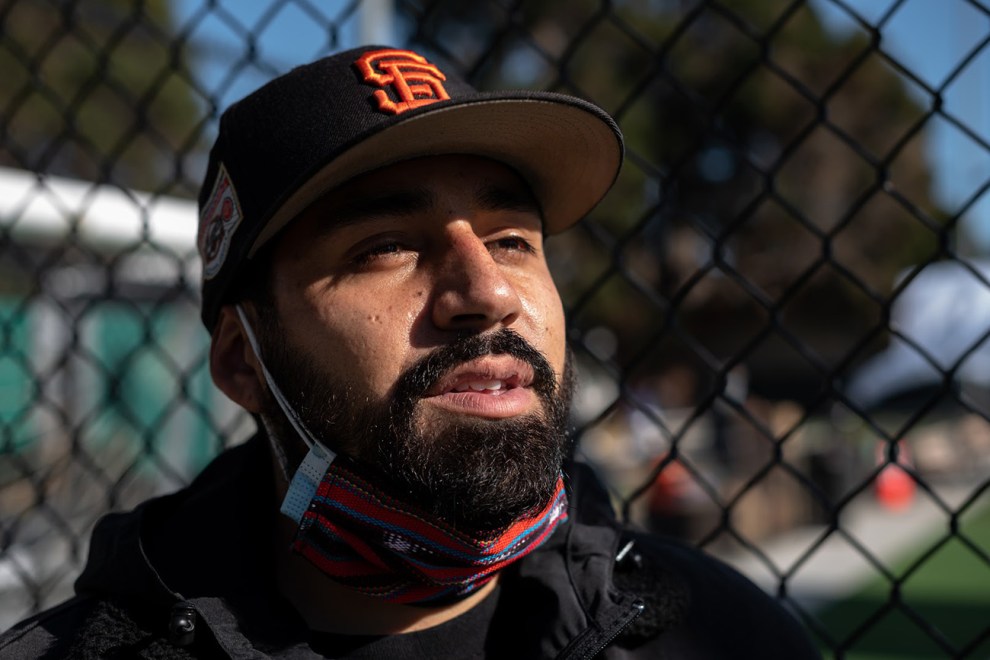
Jon Jacobo, LTF’s health committee chair
Jacobo, who grew up in the Mission as the son of Salvadoran immigrants, could relate. “We understand it because we come from it, right? I didn’t have to study poverty, and the pain of hunger and not eating, or living seven people in a one-bedroom,” he says. “I lived the shit.”
Over the course of four days, each of the 1,400 houses in the neighborhood received an average of five door knocks. By the last day, “people were slamming the door, saying, ‘I have an appointment! Leave me alone!’” Jones recalls. Meanwhile, Havlir went about securing viral and antibody tests from the Chan Zuckerberg Biohub, a nonprofit research group funded by the Facebook billionaire.
So it was that just six weeks into the city’s lockdown, 3,100 Mission residents and workers—representing a remarkable 57 percent of households in the census tract—showed up for open-air tests over the course of four days. The study increased the number of tests administered within the city by 29 percent.
The results were as eye-opening as the testing effort had been herculean. Of the people tested, 41 percent were Latino, and 41 percent were white. Yet 96 percent of those who tested positive were Latino, 88 percent made less than $50,000 a year, and 93 percent worked in jobs that didn’t enable them to shelter in place. “We made the pain undeniable,” Jacobo says. Today, it seems obvious that the coronavirus’s path would map the city’s disparities, “but at the time, we knew so little about this virus, it floored us,” remembers Hillary Ronen, the city supervisor who represents the Mission. “It was looking at the results and saying, ‘Wait a minute, more than 90 percent of the people that tested positive worked outside of the home?’”
The findings, which were among the first in the nation to quantify the disparate toll of the virus, garnered national attention. Shortly after the results were shared with the Department of Health, the city announced it was opening its testing sites to all essential workers and to symptomatic residents who couldn’t otherwise get tested, after having previously been open only to frontline medical workers and the most vulnerable. The LTF team began negotiating with city officials, advocating a permanent drop-in testing site in the Mission.
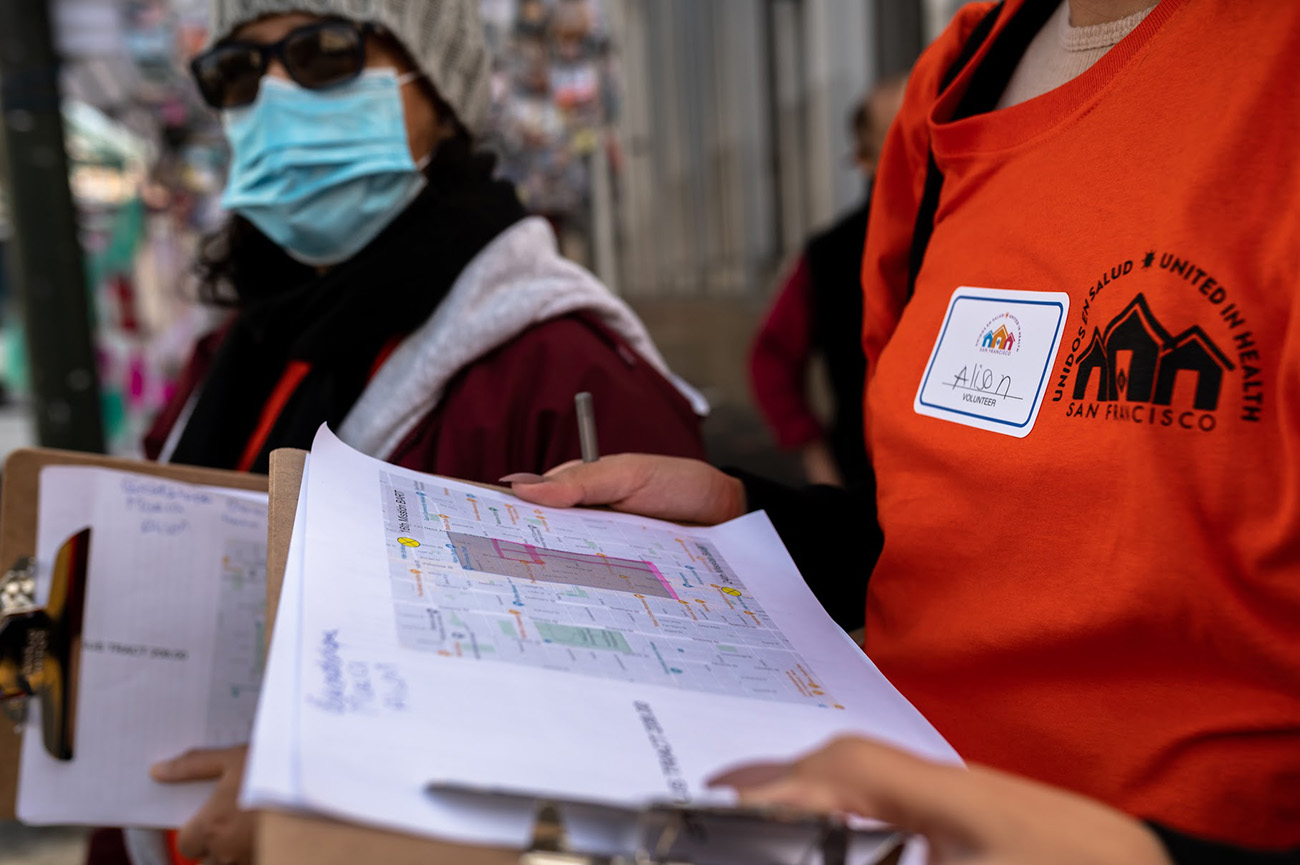
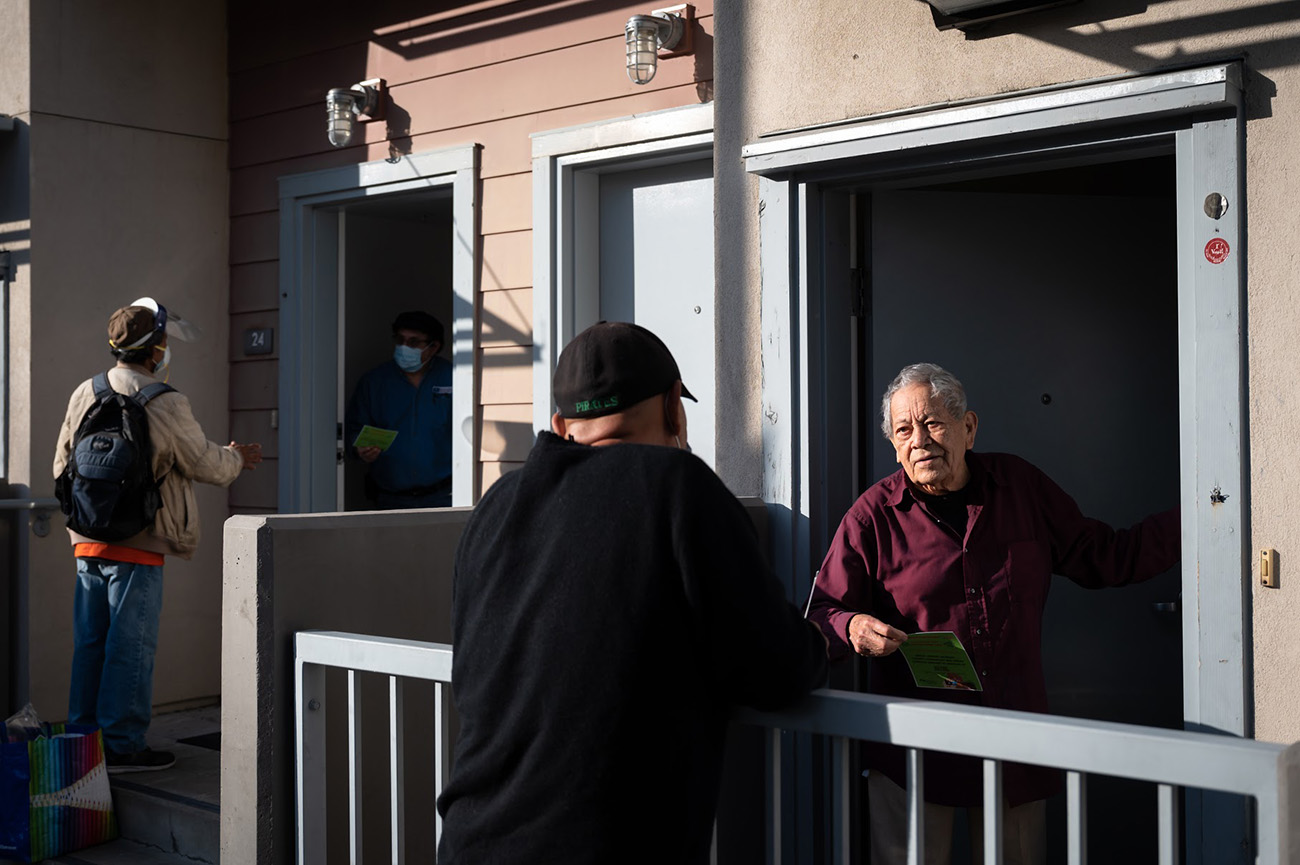
Volunteers with Unidos en Salud canvassed the Mission over the winter to sign up residents for coronavirus testing.
They also met with Ronen, relaying the hesitancy they had heard from so many residents. It wasn’t enough to offer testing, the organizers said. To quell the spread of the virus in vulnerable communities, you must ensure that residents have the ability to stay home. Based on suggestions from LTF, Ronen established a Right to Recover program in May, which used philanthropic money to provide two weeks of replacement wages, amounting to $1,285, to people who’d tested positive and had to isolate, regardless of their immigration status. “We made it up on the fly,” Ronen says. Alameda County, which includes Oakland, soon developed a similar program.
Meanwhile, the Latino Task Force blossomed, channeling the manifold skill sets and resources of its core members. LTF’s Roberto Hernandez, who orchestrates the Carnaval San Francisco festival over Memorial Day weekend, shifted gears to source pallets of food and 50-pound bags of rice and oatmeal to offer groceries to families in need from a former warehouse known as Latino City Hall. In early July, the group, in partnership with the city, established a flagship testing site outside the food hub, where, once a week, residents could drop in for a free test.
On Thursday mornings, Tulier-Laiwa, who is part Apache, leads a 9:15 a.m. prayer circle at the hub, burning sage in the middle of the street. By 10 a.m., tents have popped up, medical personnel have arrived in full PPE, and a line of people waiting to be tested has formed. The food pantry, which now serves 7,000 families a week, stocks pinto beans, cuts of meat, and the popular Maseca masa brand. On the second floor of the warehouse, volunteers on laptops help residents who drop by to apply for rental assistance, unemployment benefits, and food stamps. Translation is available not only for Spanish speakers, but also for people who speak Indigenous Mexican languages.
In September, Unidos en Salud introduced rapid tests. “When you think about it in terms of who’s coming to test here, you’re probably on your way to work, you’re probably on your way to a congregate living situation. So the sooner you know, the quicker we can help mitigate that spread,” Jacobo says. Test samples are sent to the Biohub for sequencing, generating data that has been key to tracking the infectivity of different viral strains.
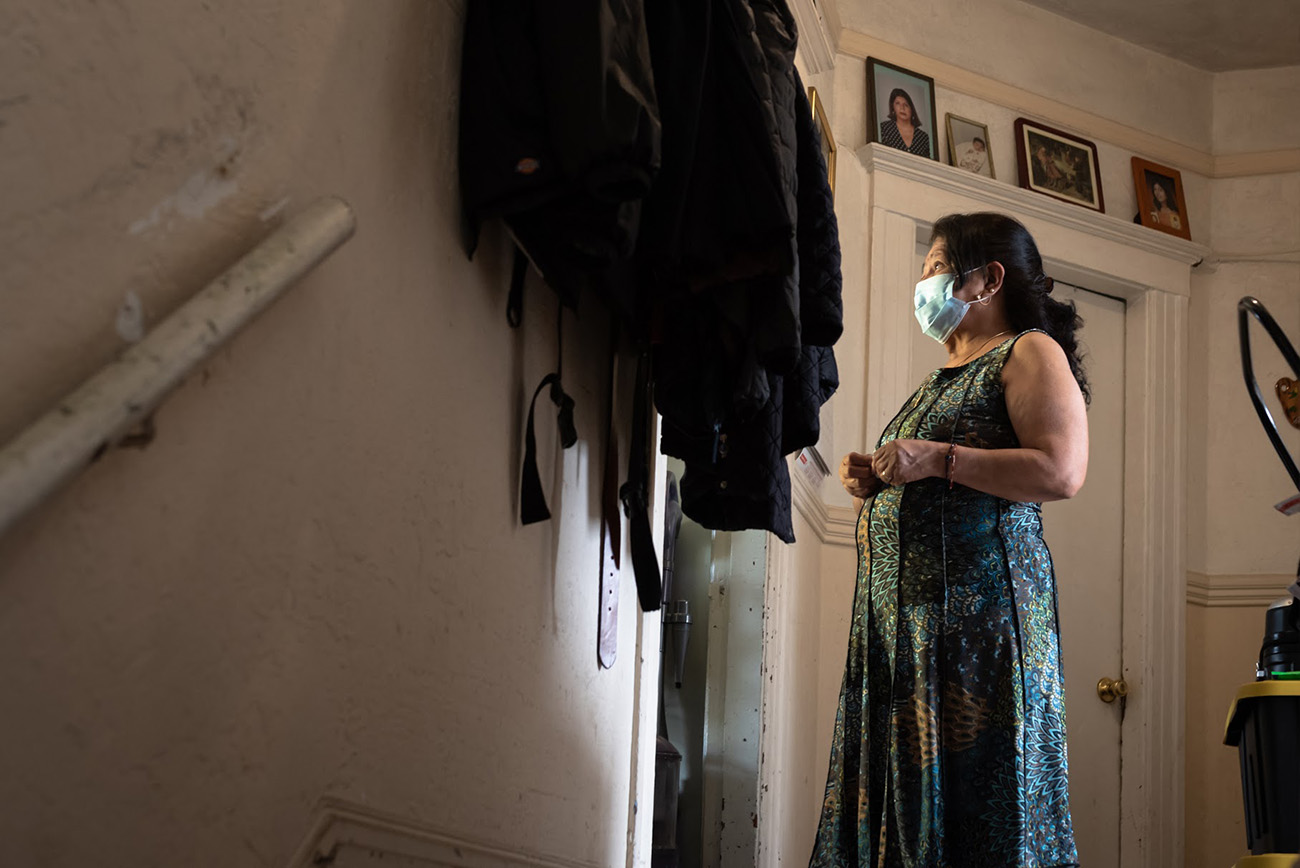
Maria Del Prosario awaits a test at her home in the Mission.
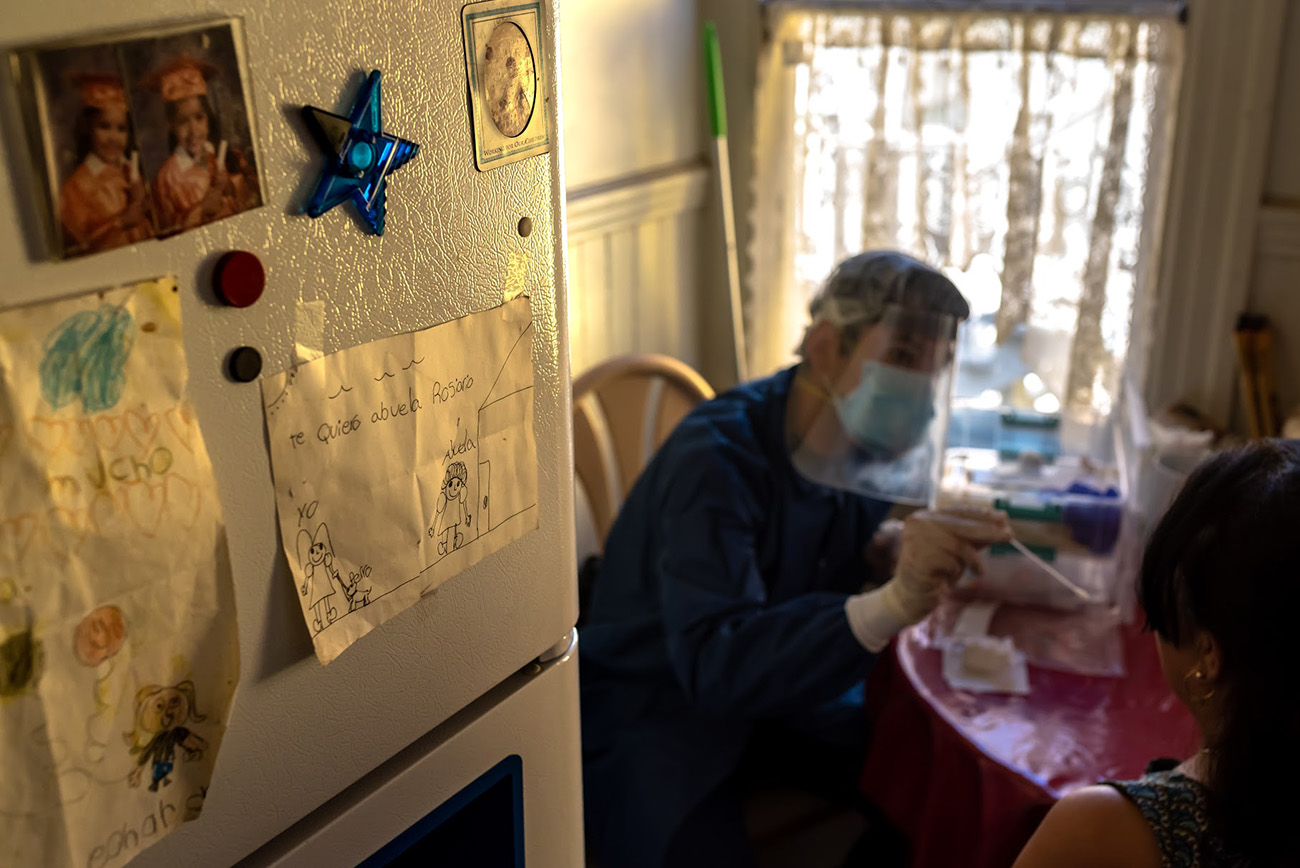
Unidos en Salud tests Prosario and her family members at their home in the Mission.
People who test positive immediately receive a phone call from Unidos en Salud’s community wellness team. If someone doesn’t have a room in which to isolate, they’re offered a spot in a hotel, paid for by the city. If they live with at least five other people, the team will come to test everyone else in their household. The team also delivers food and other essentials, including diapers, formula, and cleaning supplies, to people who are self-isolating. “You have to get into people’s business,” Jones says. “You’re asking financial questions, asking if they need money help, food help.” In January, when the Mission experienced a surge of infections, the team provided support to 500 families, averaging 15 food deliveries a day.
Shortly after smoke from wildfires wreaked havoc on her asthma in September, Lizette, a mother of two, came down with COVID. After she tested positive at the food hub’s testing site, she worried about what would happen to her sons if she got seriously ill. “It was chaos in my head,” she recalls. The wellness team gave her $1,250 to get her through the month and delivered large bags of produce and meat for every person in her family for two weeks.
Over the past year, the Latino Task Force has also partnered with the city and other community organizations to expand to four more locations outside the Mission, including the Latino-heavy Excelsior and the predominantly Black Bayview. “We say, ‘Take whatever you want from us and make it fit for your community,’” Tulier-Laiwa says. “You throw your flavor on it.”

Testers swab 10-year-old Anthony Herrera as part of Unidos en Salud’s April 2020 surveillance study.
The initiative’s progress was not without its struggles, which mirrored the colliding interests of the residents of this gentrifying city. It took months of negotiations before the city’s Department of Health agreed to allocate coronavirus tests to the Latino City Hall site on a weekly basis. Even then, the number of tests that the city committed to changed week by week, depending on the city’s supply. “It was very contentious,” Tulier-Laiwa says. “My blood pressure would go up every week because they were not giving us adequate resources.” Tests were in short supply, and “we were getting a lot of white folks in Patagonia,” Jacobo remembers. “We were trying to get undocs. We had to do some lifting [of] the social conscience. I’m like, ‘Bro, if you need it, I don’t care what color or creed you are. But at the same time, if you’re a tech worker and you want to see friends, this ain’t really for you.’”
In April, the city set up two large centralized testing sites, but they weren’t particularly easy to get to from highly affected neighborhoods, and they asked residents to make an appointment online and produce ID. A Mission Local review of a week’s worth of testing data in January found that one site, on the Embarcadero overlooking the bay, administered a little more than half of the city’s tests. Of those, just 4 percent were positive. Meanwhile, the Unidos en Salud site in the Mission, with a fraction of the testing capacity, accounted for between 16 and 46 percent of the city’s positive tests on any given day.
“It’s almost like having a fire in the southeast sector, but having a fire brigade over by the Embarcadero kind of put working on a little car fire,” Jacobo says. It wasn’t until November that the city opened a large drop-in site to serve the city’s southeastern neighborhoods. “It did take some time to get there,” acknowledged Dr. Naveena Bobba, the public health department’s deputy director. “I think we’ll have to look at Embarcadero on an ongoing basis and see: Do we want to keep that fully opened? Or do we need to shift our resources?”
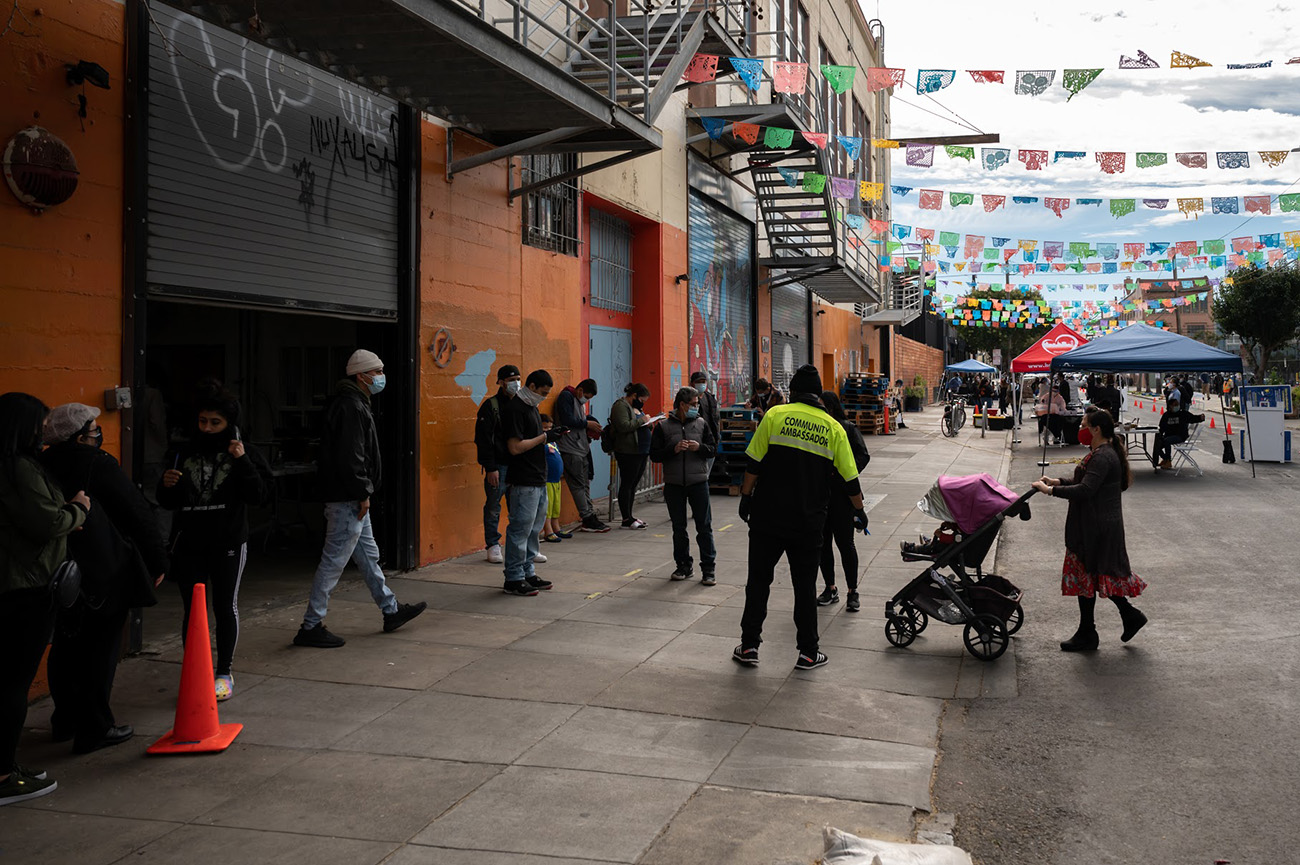
San Francisco Mission community members line up outside of the LTF hub in the Mission, which provides free testing, vaccination registration, food distribution, and other essential services.

At the LTF food and resource hub, Lourdes Beltran of Mission Hiring Hall helps community members apply for jobs.
Another pain point was money. Unidos en Salud had managed to cobble together donations from philanthropies, but the community wellness teams relied predominantly on volunteers. The Right to Recover fund, paid for by private donors, repeatedly ran out of funding. Finally, in December, the city agreed to support the wellness teams; in February, it committed to funding the Right to Recover effort until the pandemic ends. “I am convinced that it’s the full credit of the Latino Task Force that the city moved towards bringing the testing, bringing the vaccines to the people, as opposed to making the people go to the vaccines,” Ronen says.
Unidos en Salud’s influence has stretched outside the city’s borders as it’s partnered with organizations serving a Latino neighborhood in the affluent, predominantly white county of Marin and a farmworker community in the Central Valley. The expansion is one of 69 projects across the country to receive funding from the National Institutes of Health to address coronavirus disparities. Taveras’ team, another grant recipient, rolled out a suite of coronavirus testing units that target predominantly Latino communities outside of Boston. Like Unidos en Salud’s, the model aims to break out of the confines of the brick-and-mortar doctor’s office. She says, “We are really, really focused on this idea of flipping that model of ‘The doctor will see you now’ to ‘The patient will see you now.’”
As vaccines started to trickle into San Francisco early this year, Unidos en Salud surveyed those coming in for testing about their attitudes toward vaccination. “You were seeing these narratives out there, that communities of color are anti-vaxxer, they have mistrust, they don’t want to get vaccinated,” Jones says. “You knew where that was going to go: It becomes a self-fulfilling prophecy, and it’s an excuse for why vaccine resources are not going to be in communities of color.”
Contrary to prevailing narratives, Mission residents are enthusiastic about getting vaccinated. Of more than 4,400 residents surveyed, 86 percent said they would probably or definitely get the vaccine when it became available—much higher than the national average. The survey also looked at who participants trusted to provide information related to the vaccine. In first place were doctors, followed by the Latino Task Force. When shots were about to be available, Unidos en Salud emailed qualifying people who had tested at their sites over the past year, following up with a phone call if needed. “We could slice and dice the information we gathered since April: Who the 65-year-olds were, who lived in these zip codes that we were prioritizing, who are people of color, or who were community health workers,” Jones says.
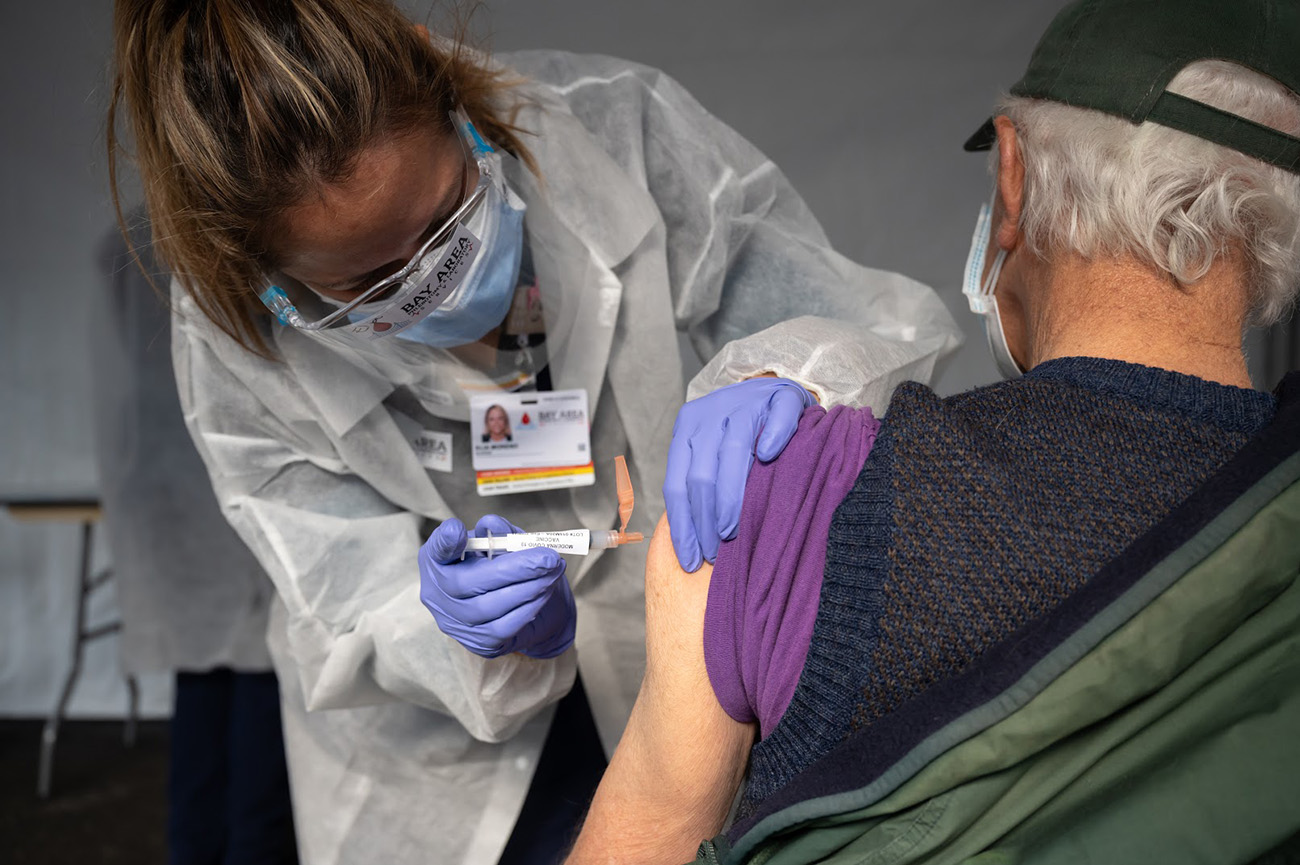
John Salisbury, a longtime Mission resident, came to the Unidos en Salud vaccination site after having trouble securing an appointment with his doctor.
After the year he’d just witnessed, Jacobo remained concerned that the same working class people from the Mission whose communities suffered disproportionately from COVID would also face barriers in getting the vaccine. As of March 1, only 9 percent of the vaccines administered to San Francisco residents 16 or older had gone to Latinos, even though they make up 14 percent of the city. So the Latino Task Force doubled down on its recruitment efforts. Volunteers canvassed restaurants in the Mission to sign up cooks, dishwashers, and other essential workers for upcoming spots.
By the first day that food workers were eligible, about 1,500 people were on the vaccination waitlist. Jacobo attributes these numbers to trust that the initiative has accrued, slowly but surely. “From the beginning, it was the credibility of some of the core organizers—before anybody knew what the Latino Task Force was—that gives it the trust,” he says. “Then people can say, ‘That’s a good place, they’ll take care of you.’ Which leads to the attitudes. It’s the secret sauce.”
Susana Rojas, who runs the Unidos en Salud community wellness team with her daughter, was among the canvassers. At one restaurant, the owner, who was working the register, told her he wasn’t interested in getting his employees vaccinated. As she walked away, a cook looked up and asked what she was doing. She explained she was signing people up for vaccinations. “He’s like, ‘You’re from the Latino Task Force, huh?’” Rojas recalled. She said she was. The cook said, “I’ll do it. Con ustedes, sí.” With you, yes.
Editor’s Note: On Friday, August 6, 2021, Jon Jacobo was accused of rape by housing advocate Sasha Perigo. Jacobo then resigned from his building inspection commission seat and took a leave of absence from his work.

